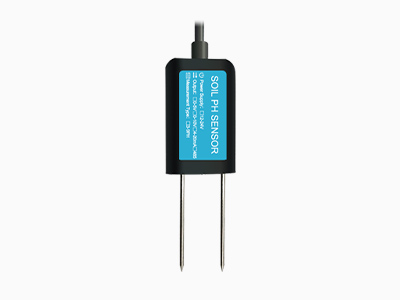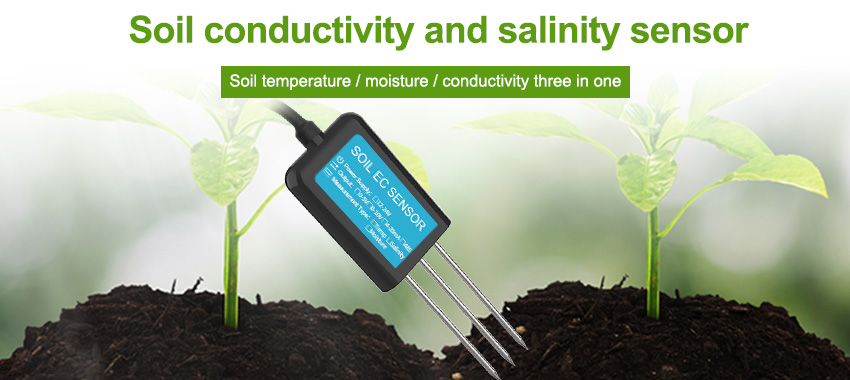Sustainable agriculture is a pressing need in today’s world, as the global population continues to grow and environmental concerns escalate. One crucial aspect of sustainable agriculture is efficient resource management, which includes optimizing soil conditions for crop growth. Precise soil monitoring with sensors has emerged as a powerful tool in advancing sustainable agriculture. This article explores the significance of precise soil monitoring with sensors and its potential to enhance crop productivity while minimizing environmental impact.

The Importance of Soil Monitoring:
Soil health is directly linked to crop productivity and environmental sustainability. Monitoring soil conditions provides valuable insights into its physical, chemical, and biological properties, enabling farmers to make informed decisions regarding crop management. The following reasons highlight the importance of soil monitoring:
a) Nutrient Management: Soil monitoring helps determine nutrient levels in the soil, allowing farmers to apply fertilizers precisely, minimizing waste, and reducing the risk of nutrient runoff that can lead to water pollution.
b) Water Management: Monitoring soil moisture levels helps optimize irrigation practices, preventing over or under-watering, conserving water resources, and reducing energy consumption.
c) Disease Prevention: Early detection of soil-borne diseases through soil monitoring enables farmers to implement preventive measures, reducing the need for excessive pesticide use and promoting healthier crops.
Precise Soil Monitoring with Sensors:
Precise soil monitoring involves the use of sensors that measure various soil parameters. Soil sensors provide real-time data on soil conditions, enabling farmers to monitor and manage their fields more effectively. The following are key types of sensors used in precise soil monitoring:
a) Moisture Sensors: These sensors measure soil moisture levels, helping farmers determine when and how much to irrigate. They prevent water wastage by providing accurate information about the soil’s water-holding capacity.
b) Temperature Sensors: Soil temperature sensors provide critical information about soil heat transfer, which affects microbial activity, nutrient availability, and seed germination. This data helps farmers optimize planting schedules and manage crop growth.
c) Nutrient Sensors: These sensors measure nutrient levels in the soil, including nitrogen, phosphorus, and potassium. They help farmers apply fertilizers precisely, avoiding over-fertilization, reducing costs, and minimizing environmental pollution.
d) pH Sensors: Soil pH is crucial for nutrient availability and microbial activity. pH sensors assist in determining if soil acidity or alkalinity needs adjustment, ensuring optimal crop growth.
Benefits of Precise Soil Monitoring with Sensors:
The integration of precise soil monitoring with sensors offers numerous benefits in advancing sustainable agriculture:
a) Resource Efficiency: By providing real-time data on soil conditions, sensors enable farmers to optimize the use of water, fertilizers, and other resources. This reduces waste, conserves resources, and improves overall resource efficiency.
b) Enhanced Crop Productivity: Precise monitoring allows farmers to tailor their management practices to suit specific soil conditions. By ensuring that crops receive the right amount of water and nutrients at the right time, sensors contribute to improved crop productivity and quality.
c) Environmental Protection: Effective soil monitoring reduces the risk of excessive fertilizer and pesticide use, minimizing environmental pollution and water contamination. This promotes a healthier ecosystem and protects biodiversity.
d) Cost Savings: By optimizing resource usage, precise soil monitoring helps farmers reduce input costs associated with water, fertilizers, and pesticides. This contributes to increased profitability and economic sustainability.
Implementing Precise Soil Monitoring Systems:
To implement precise soil monitoring systems effectively, the following considerations should be taken into account:
a) Sensor Selection: Choose appropriate sensors based on the specific requirements of the crop, soil type, and environmental conditions. Ensure that the sensors are reliable, accurate, and compatible with the chosen monitoring system.
b) Data Integration and Analysis: Establish a robust data management system to collect, store, and analyze the sensor data. Integration with other farm management systems and the use of data analytics can provide valuable insights for decision-making.
c) Calibration and Maintenance: Regularly calibrate and maintain the sensors to ensure accurate measurements. Periodic verification against laboratory tests is recommended to validate sensor accuracy.
d) Farmer Training and Support: Provide training and support to farmers on how to interpret sensor data and make informed decisions. Collaboration with agricultural experts and researchers can enhance knowledge exchange and promote best practices.
Future Perspectives:
The future of precise soil monitoring with sensors holds significant potential for advancing sustainable agriculture:
a) Sensor Technology Advancements: Continued research and development in sensor technology will lead to more advanced, affordable, and user-friendly sensors. This will enable broader adoption and accessibility for farmers worldwide.
b) Integration with Precision Agriculture Technologies: Integrating soil sensors with other precision agriculture technologies, such as satellite imagery and drones, can provide a comprehensive understanding of the entire agricultural system. This integration will facilitate more precise and efficient resource management.
c) Artificial Intelligence and Machine Learning: The use of artificial intelligence (AI) and machine learning (ML) algorithms can analyze large volumes of sensor data and provide predictive insights. AI-powered systems can help optimize crop management decisions and improve overall farming efficiency.
d) Remote Monitoring and Automation: Advancements in connectivity and automation technologies enable remote monitoring of soil conditions. Farmers can receive real-time updates and control irrigation and fertilization systems based on sensor data, even when they are not physically present in the fields.

Conclusion:
Precise soil monitoring with sensors is a game-changer in advancing sustainable agriculture. By providing real-time data on soil conditions, sensors help farmers optimize resource usage, enhance crop productivity, protect the environment, and reduce costs. As technology continues to evolve, the integration of sensors with other precision agriculture technologies, AI, and automation will further revolutionize the way we monitor and manage soil health. Embracing precise soil monitoring with sensors is a crucial step towards achieving a more sustainable and productive agricultural future.
